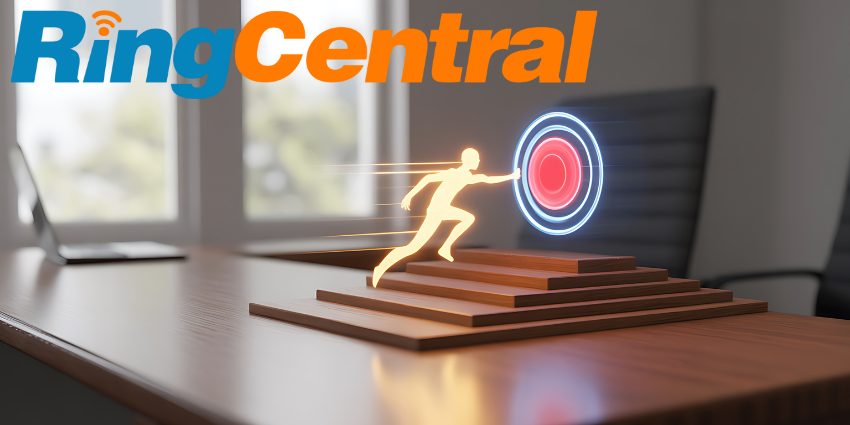“Your call will be monitored for quality and training purposes” – it’s a statement most people have heard when contacting a call center. But what does it mean?
Ultimately, it means that the call center is evaluating call recordings to understand broken processes, monitor compliance, and bolster customer service experiences.
Indeed, call monitoring is a valuable initiative. It also gives organizations the insights they need to minimize friction points in the customer journey, enhance training, and discover opportunities.
Over the years, this process has evolved with customer expectations. Yet, there’s still much more that many contact centers can do.
What Is Contact Center Call Monitoring?
Contact center call monitoring is the process of reviewing recorded or – increasingly often – real-time conversations between customers and agents.
The activity helps businesses evaluate employee performance, identify training needs, and discover areas to improve service.
Modern contact center quality assurance (QA) solutions house numerous tools to support call monitoring, leveraging everything from AI and automation to data and analytics.
Used effectively, these tools can deliver numerous benefits, such as:
- Improving Agent Performance: By giving companies insight into customer interactions, monitoring tools help businesses understand each agent’s strengths and weaknesses. As such, supervisors may deliver effective feedback, provide access to more relevant training, and improve team performance.
- Enhancing Agent Experiences: Satisfied agents are more likely to deliver exceptional service. Modern call monitoring tools help employees adapt in real time with instant feedback. Meanwhile, supervisors can spot excellent performance, offer more recognition for good work, and keep the team motivated.
- Greater Customer Satisfaction: Contact center call monitoring helps companies identify friction points in the customer journey and develop better customer success strategies. As the tech supports agent engagement, too, that has a positive impact on the customer.
- Increased ROI: With insights into factors that affect customer loyalty and churn, companies can make data-driven decisions that improve profits and revenue. They can even uncover bottlenecks that could lead to wasted time or money.
Finally, call monitoring also helps companies ensure they’re adhering to compliance and quality standards. They can use insights to track potential risks, avoiding damage to their reputation and customer relationships.
How Does Call Monitoring Work?
Contact center call monitoring has come a long way in recent years, thanks to automation.
Historically, service teams would take a quality scorecard, score typically between four to ten interactions a month per agent, and track those scores to monitor their performance over time.
With that data, they may also tailor coaching plans, set targets, and incentivize agents.
That process was not always fair, and agents would often complain: “You have only looked at my bad calls.”
Nevertheless, automation has changed the game, allowing contact centers to monitor every contact center conversation and track performance across every contact.
Thankfully, cutting-edge are pushing call monitoring initiatives even further. Here are a few more examples:
- Screen Recording Software: Instead of just analyzing the call, seeing the agent’s screen allows supervisors to spot more clumsy processes, agent workarounds, and automation opportunities.
- Conversational Analytics: AI-based intelligence tools analyze transcripts to identify intent, common topics, patterns, and emotions. That allows for a more granular evaluation.
- Supervisor Intervention: Via analytics-based, real-time metrics, organizations can identify when to “barge” into a call or “whisper” in the ear of an agent.
- Data Consolidation: By running a data lake over the QA tool and broader contact center stack, leaders can pool insights and gain deeper insights into agent performance.
To share an example of the last point, just consider how a supervisor can collate call monitoring and workforce management (WFM) data.
In doing so, they may spot when an agent typically works at their best and offer them more shifts at that time. That’s just one possibility of many.
Contact Center Call Monitoring Best Practices
Though effective contact center call monitoring offers countless benefits, it also presents a few challenges.
For instance, knowing that supervisors are listening to and reviewing calls can make employees feel “micromanaged”.
Additionally, companies can face issues in tracking customer conversations when they cross different channels and systems.
The following best practices should help companies make the most of their call monitoring strategy and overcome such common challenges.
1. Define Clear Objectives and Evaluation Metrics
First, companies need a clear insight into what they want to monitor and improve in the contact center.
It’s easy to focus entirely on cost reduction and efficiency in the quality scorecard criteria.
However, this strategy can often lead to poor customer experiences and an increased risk of employee burnout.
As such, contact centers should consider a more holistic approach. That involves monitoring more than QA scores and considering how them in relation to other metrics, like customer satisfaction and first contact resolution.
In doing so, service teams can spot opportunities to continually adapt and evolve their call monitoring criteria.
2. Implement a Co-ordinated, Cross-Function Strategy
Leading contact centers approach call monitoring as a team effort. Analysts, coaches, and team leaders share the same standards and create workflows between one another to strategically uplevel performance.
In doing so, the analyst identifies skill gaps, the coach addresses those, and the team leader reinforces key learnings. The analyst then tracks improvement to monitor the coaching’s impact.
Such a collaborative approach encourages a unified vision of exceptional customer service, aligns teams toward common goals, and enhances the ROI of call monitoring.
3. Don’t Hyperfocus on the Scorecard
The scorecard is a critical element of contact center call monitoring, but it’s not the only element.
Try to bring in new perspectives by pulling in voice of the customer (VoC) research, considering new metrics, and perhaps even implementing a secret shopper initiative.
By diversifying the call monitoring program, contact centers gain a more comprehensive understanding of interaction quality.
Also, remember to stretch out all monitoring initiatives beyond the agent role. Consider IVR, bot, network, and other types of testing to gain a more rounded perspective.
Mastering Contact Center Call Monitoring
As customer expectations evolve, call monitoring solutions give companies an opportunity to spot broken processes, take action, and enhance customer service experiences.
Additionally, these tools allow organizations to spot agents doing good things, offer recognition, and reinforce the positive.
Ready to take the next step towards a more efficient, productive contact center? Unpack more lessons by reading the article: 10 Best Practices for Contact Center Quality Assurance in 2025







